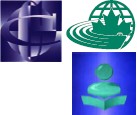Publications
Culture, Tourism and the Centre for Education Statistics
Ability in mathematics and science at age 15 and program choice in university: differences by gender
Ability in mathematics and science at age 15 and program choice in university: differences by gender
Archived Content
Information identified as archived is provided for reference, research or recordkeeping purposes. It is not subject to the Government of Canada Web Standards and has not been altered or updated since it was archived. Please "contact us" to request a format other than those available.
by Darcy Hango, December 2013

Acknowledgements
The author wishes to acknowledge all those involved in the development and production of the Youth in Transition Survey (YITS) and thanks Employment and Social Development Canada for its support, financial and otherwise, of YITS. The paper benefitted as a result of valuable input and comments from Martin Turcotte, Sébastien Larochelle-Côté, Sarah-Jane Ferguson, Marc Frenette, Kathryn McMullen, and an anonymous external reviewer.
Acronyms
The following acronyms are used in this publication:
CEGEP - Collège d’enseignement général et professionnel
CIP - Classification of Instructional Programs
CV - Coefficient of variation
NELS - National Educational Longitudinal Study
NHS - National Household Survey
OECD - Organisation for Economic Co-operation and Development
PISA - Programme for International Student Assessment
PSE - Post-secondary education
PSIS - Postsecondary Student Information System
SAT - Scholastic Aptitude Test
STEM - Science, technology, engineering, mathematics and computer science
YITS - Youth in Transition Survey
Abstract
Past research has revealed that young women are more likely to enter postsecondary programs that have lower returns in the labour market, such as the arts, humanities and social sciences. Young men, conversely, tend to enrol in and graduate from programs in science, technology, engineering and mathematics (STEM), which generally have greater labour market returns. Factors such as academic interests, achievement test scores, and high-school marks can affect later university program choice. Using the linked Youth in Transition Survey (YITS)–Programme for International Student Assessment (PISA) data, the current paper examines the relationship between mathematics and science test scores at age 15 and first program choice in university, with a focus on differences in ability in mathematics and science by gender. Generally speaking, the results reveal that the intersection of gender and ability does matter; even young women of high mathematical ability are less likely to enter STEM fields than young men of similar or even lesser mathematical ability. This implies that something other than pure ability is affecting young women’s likelihood of entering STEM programs in university.
- Date modified:
